Introduction of me
I am a textile designer and weaver from Denmark who lives and works in Copenhagen. During my studies at the Design School and ever since I have specialised in weaving. I do artworks and research on my own manual shaft loom in my studio and I also work with digital weaving.
I have also been teaching weaving both at the design schools in Denmark and at different workshops.
In my own practice I work with textiles in a spatial context. I am interested in the effect textiles can have in interior and how it can make architecture more flexible. For that reason I have been working with things like room dividers and curtains in different ways. But I also work with an experimental approach, investigating the possibilities within weaving and what kind of objects you can create with weaving. That has led me to working with woven three dimensional objects and sculptures. For me the craft of weaving and the culture around it is also very important and I am interested in learning more about both different techniques, production methods but especially also the people working with weaving.
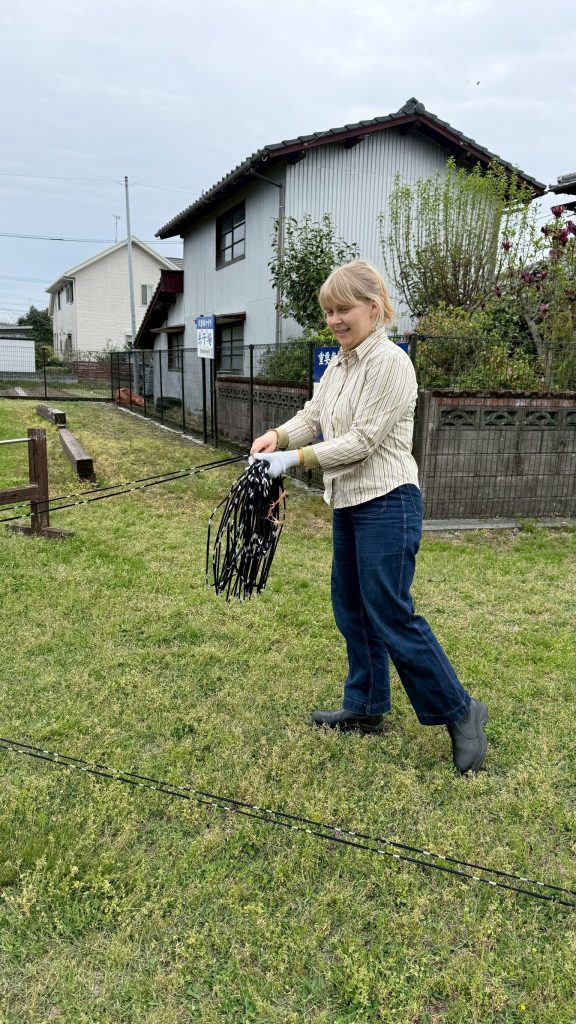
Interest in Japan
For so many years it has been a dream for me to travel to Japan because I find the culture very inspiring and of course especially the textile tradition has been fascinating to me. In Denmark we don’t have much textile production anymore because we import it, for that reason it is even more interesting for me to get an insight into the textile tradition and production in Japan. There are so many things to explore and see in Japan and for example the architecture is also very interesting to me.
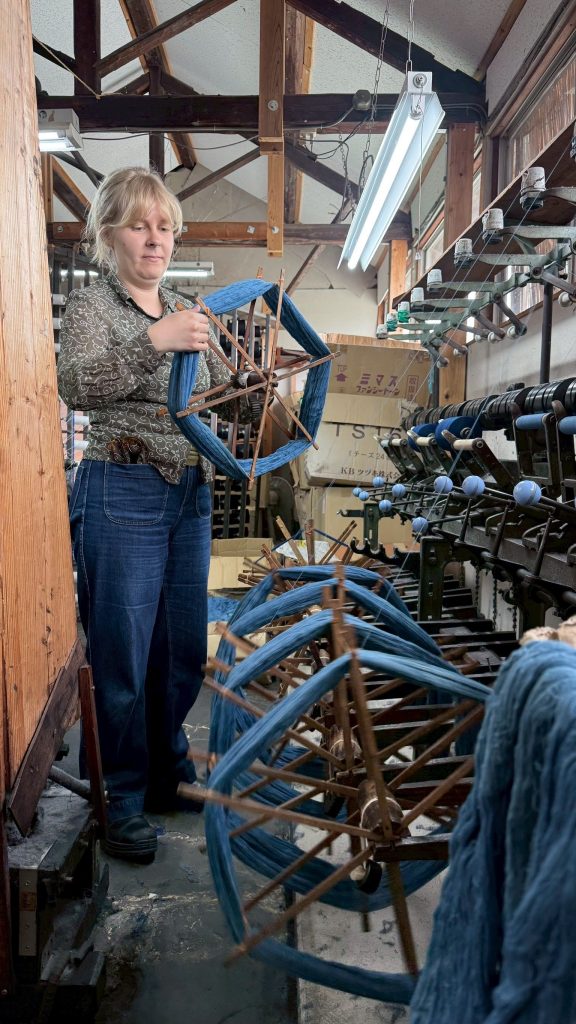
Interest in Kasuri
A couple of years ago I had the chance to travel to India to learn about ikat weaving from a master weaver in Orissa. I didn’t know much about ikat beforehand but it was a very inspiring journey for me and ever since that, I have worked with ikat weaving in various ways in my own practice. The weavers I learned from in India only did ikat by hand and they worked with very complex patterns and were specialised in double ikat (both weft and warp). It is a very time consuming technique and the people there had worked with it for many generations so they were really master craftsmen. I have tried to translate what I learned there to techniques that are possible and interesting for me to work with on my loom. I have explored different ways of working with the ikat threads and find it very fascinating how you can create patterns with this technique. The thing I love about ikat is that all throughout the process of creating it, the aim is to make the patterns precise and visible, but in the end the characteristics and quality marks of it, is the blurriness of the patterns and the impreciseness – I find that very beautiful.
Ever since I learned about ikat in India and my own further exploration of the technique I have been wanting to learn about the Japanese tradition of this technique – Kasuri.
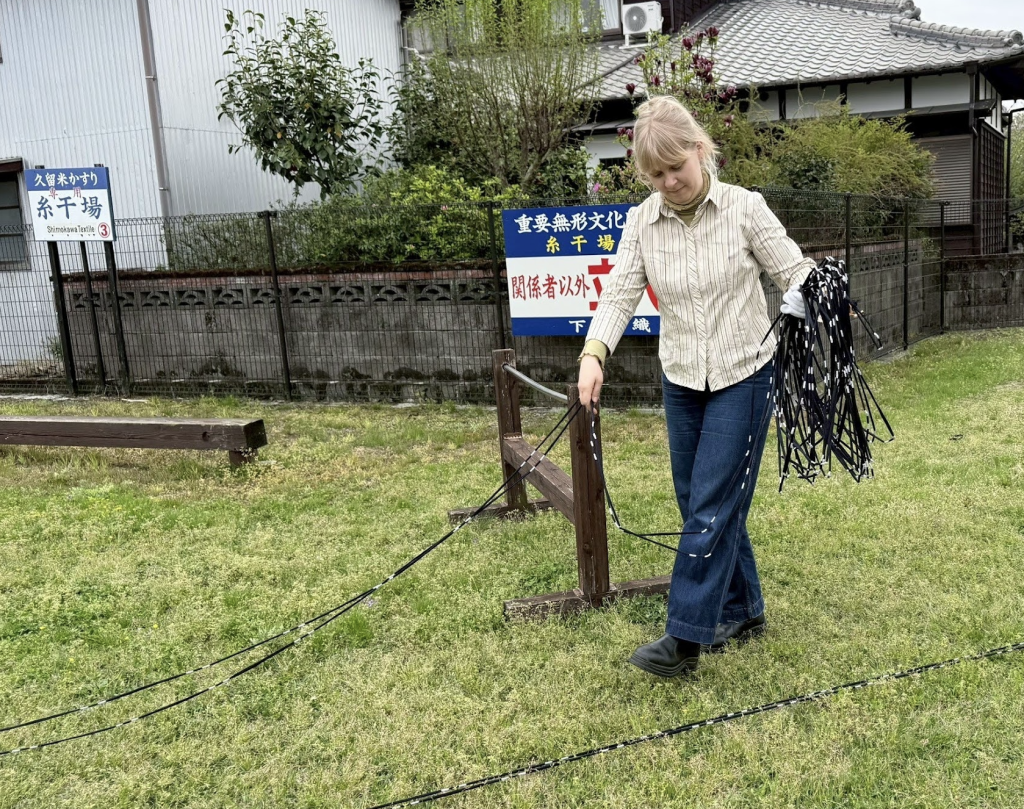
Reasons for visiting Shimogawa
I have been following Shimogawa’s work for a long time and have been very interested in their work with kasuri. Since I wanted to learn about Kasuri it seemed like a really good place to go as Kyozo Shimogawa is very open about sharing his and his employees’ knowledge about the technique. I was also especially interested to learn about how they are able to work with this technique in a bigger scale – production wise, because until now I have only learned about it in a hand weaving context. Kasuri or ikat textiles done by hand will be very expensive because the process is so time consuming and that sets limitations on the scale and context you can work with it in. I want to work with kasuri textiles in a spatial context and for that reason I need to scale up. At Shimogawa’s factory they are able to make a bigger production of kasuri textiles than when it is done by hand and still keep the high quality and the craftsmanship of the textiles.
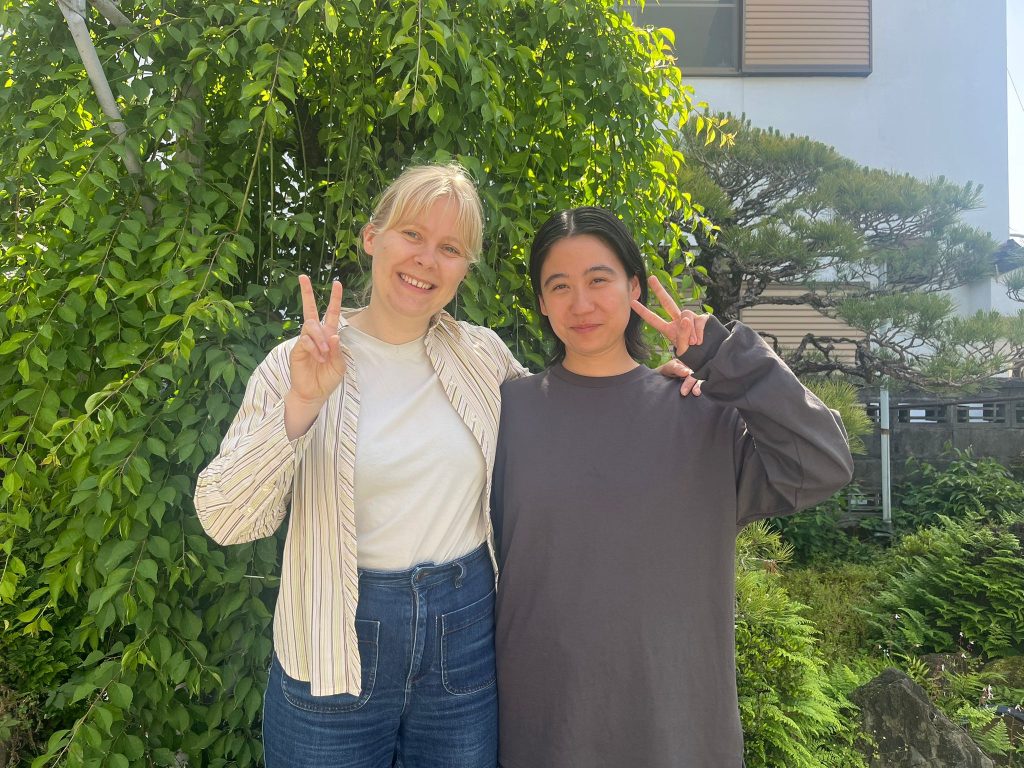
Impressions of your stay
I have learned a lot from my stay at Shimogwa’s both about kasuri, textile production, Japanese culture and life! A lot is still processing in my mind, and I am very happy to have met the people here and to follow their everyday work.
I have learned a lot about the process of weaving kasuri on machine looms and what the possibilities and limitations are, doing it in this scale of production. If I would have done a kasuri design beforehand it would have looked completely different from what I can do now with the knowledge I have gained about the process. I have looked through Shimogawas impressive archive of textiles, seen examples of a lot of different kasuri designs and collaborations they have made, which all fills me with inspiration and new ideas. Even though there really are endless possibilities in terms of design in kasuri, I find it really interesting to learn about the limitations and all the things you can think about in the design to make it more suitable for this kind of production. It is very different from weaving it by hand, as you can’t correct every thread when it is machine weaving.
I feel very privileged to have gotten this insight into Shimogawa’s work and especially to have met new friends here.
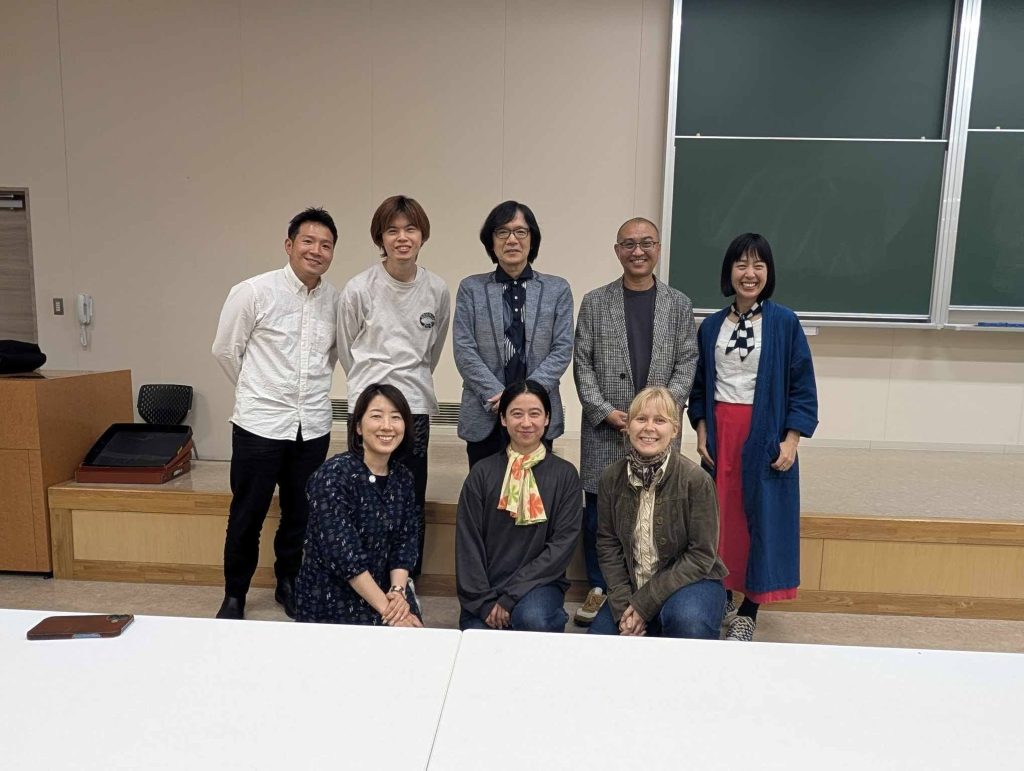
Future goals
My aim is to do a collaboration with Shimogawa to create a kasuri design. This has been my goal from the very beginning of contacting Kyozo, and now after having been here I am even more motivated to continue the process. I think kasuri textiles has so much potential in a spatial setting and I am looking forward to go back home to my studio and work on ideas and designs for this. I want to create a kasuri design that takes into consideration all these adjustments you can make to create a design that fits to the production method at Shimogawas factory and I am sure something interesting will come out of this.
I also wish to contribute to the further development of the weaving and ikat tradition and to keep these different weaving techniques alive. I am also going to continue working with ikat techniques in my own weaving practice now with new knowledge and inspiration for it.
So I hope very much to come back to Shimogawa’s kasuri village and continue the collaboration.

A message from Kyozo Shimogawa
Anna, who had been sending me a message about her stay for over a year, finally got to visit Shimokawa Textiles. It’s not the first time that someone has visited Japan for the first time, so we have a common impression. I got the impression that she had a clear purpose and action, and was walking her own path. As she repeatedly observed and tried to confirm things with her own hands, the originally planned three weeks of her stay passed, and she asked for an extension of one more week. This gave us time to have a deep discussion. Kasuri (known overseas as Ikat) made by hand is expensive because it is produced in small quantities, but Kurume Kasuri is the only one that can be mass-produced on a power loom in modern times, which is attractive. By producing it commercially, various possibilities are expanded. She noticed this by checking my Instagram for several years. By creating a cycle of discovery → stay → learning → collaborative production, we will continue to make business partners all over the world. By forming our own community, we will continue to make Kasuri. Shimokawa Orimono felt that the time had come to officially establish an internship program and start officially recruiting.
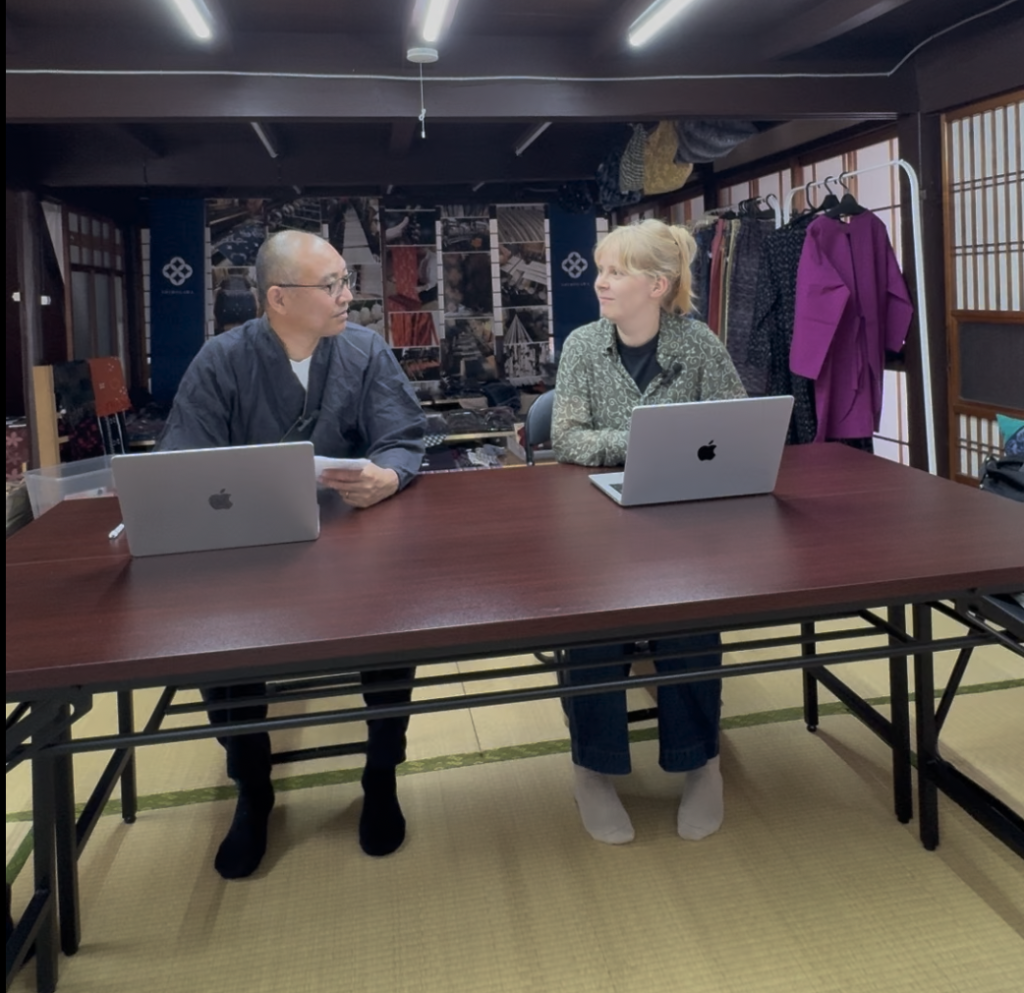
Shimogawa-Orimono
E-MAIL info@oriyasan.com
URL oriyasan.com
instagram http://instagram.com/shimogawakyozo/
facebook https://www.facebook.com/shimogawaorimono
X @kasuritter
YouTube https://www.youtube.com/channel/UCOZennIqkscFGNJLwnTOyKg